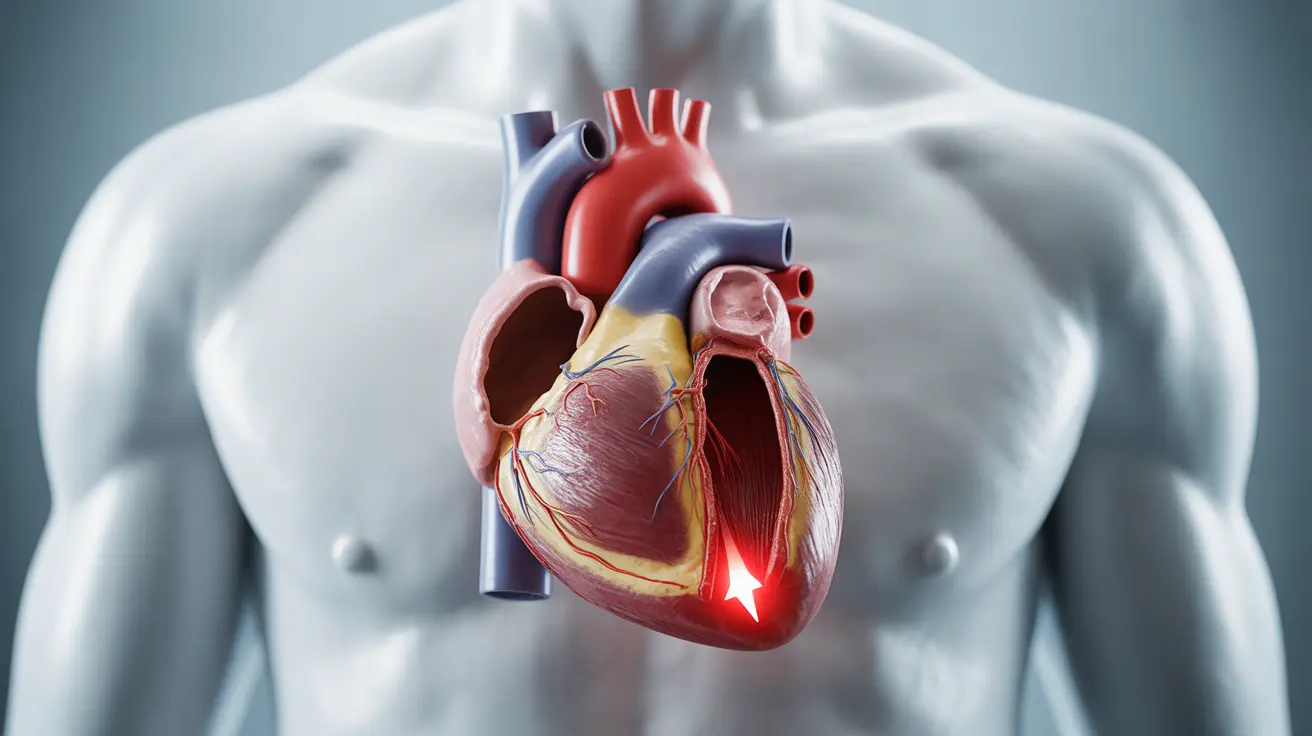The right ventricle is a crucial chamber of the heart that plays a vital role in maintaining healthy circulation throughout your body. This powerful pump works tirelessly to move blood from your heart to your lungs, where it becomes enriched with oxygen before circulating to the rest of your body.
Understanding how the right ventricle functions and recognizing potential problems can help you maintain better heart health and know when to seek medical attention. Let's explore this essential component of your cardiovascular system in detail.
Structure and Function of the Right Ventricle
The right ventricle is one of four chambers in your heart, specifically designed to pump blood to your lungs through the pulmonary artery. Its unique muscular structure allows it to handle lower-pressure pumping compared to the left ventricle, making it perfectly adapted for its specialized role in pulmonary circulation.
Key Anatomical Features
The right ventricle has several distinct characteristics that enable its function:
- Thin, flexible muscular walls
- Crescent-shaped chamber design
- Tricuspid valve for blood input
- Pulmonary valve for blood output
- Internal muscular projections called trabeculae carneae
The Right Ventricle's Role in Circulation
When deoxygenated blood returns from your body through the superior and inferior vena cava, it enters the right atrium before flowing into the right ventricle. The right ventricle then contracts, pushing blood through the pulmonary artery to your lungs for oxygenation.
The Pumping Process
This vital process occurs in several stages:
- Blood fills the relaxed right ventricle
- The ventricle contracts, creating pressure
- The pulmonary valve opens
- Blood is ejected into the pulmonary artery
- The cycle repeats with each heartbeat
Common Right Ventricle Conditions
Several conditions can affect right ventricle function:
- Pulmonary hypertension
- Right-sided heart failure
- Congenital heart defects
- Tricuspid valve disease
- Cor pulmonale
Warning Signs and Symptoms
Common indicators of right ventricle problems include:
- Swelling in the legs and ankles
- Fatigue and weakness
- Shortness of breath
- Irregular heartbeat
- Reduced exercise tolerance
Maintaining Right Ventricle Health
Several strategies can help protect your right ventricle:
- Regular cardiovascular exercise
- Maintaining healthy blood pressure
- Following a heart-healthy diet
- Managing stress levels
- Regular medical check-ups
Frequently Asked Questions
What is the main function of the right ventricle in the heart?
The right ventricle's primary function is to pump deoxygenated blood from the heart to the lungs through the pulmonary artery. This crucial process ensures blood receives fresh oxygen before being distributed throughout the body.
What are common symptoms or signs of right ventricle failure or right-sided heart failure?
Common signs include swelling in the legs, ankles, and abdomen; fatigue; shortness of breath, especially during physical activity; rapid or irregular heartbeat; and enlarged neck veins. Some patients may also experience a decreased appetite and bloating.
How does the right ventricle pump blood to the lungs and why is this process important?
The right ventricle pumps blood through coordinated muscle contractions, pushing blood through the pulmonary valve into the pulmonary artery. This process is essential because it enables blood to receive oxygen in the lungs, which is necessary for all bodily functions.
What conditions or diseases can affect the right ventricle's ability to work properly?
Various conditions can impact right ventricle function, including pulmonary hypertension, coronary artery disease, congenital heart defects, tricuspid valve disease, and conditions that affect the lungs such as chronic obstructive pulmonary disease (COPD).
How can right ventricle health be protected or improved through lifestyle changes or medical treatment?
Right ventricle health can be maintained through regular exercise, a heart-healthy diet low in sodium and saturated fats, stress management, and avoiding smoking. Medical treatments may include medications to reduce blood pressure, manage heart rhythm, or treat underlying conditions. Regular medical monitoring is essential for those with known heart conditions.




